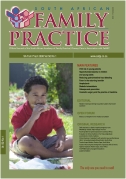Trends of Rape in Mthatha area, Eastern Cape, South Africa
Keywords:
Rape, sexual assaults, sexual abuse and HIV
Abstract
Background: The epidemiology of rape is a very complex issue that is difficult to research. The meaning of rape is different for different countries, religions, and socio-economic groups, and it involves both stigma and discrimination. Therefore, rape statistics are either not available or incomplete. This study was an attempt to highlight the problem of rape in the Mthatha area of the Eastern Cape Province in South Africa. Objectives: To estimate the trend of sexual assault in the Mthatha area of South Africa. Methods: This is a review of the Sinawe Centre’s records of victims of sexual assault. The centre is the only official centre in this region that deals with cases of sexual assault. Results: A total of 2 378 victims of sexual assault seen at Sinawe Centre over a period of six years (20012006). The average rate of sexual assault was 198 per 100 000 women a year. There was a tenfold increase of sexual assault from 39 per 100 000 women in 2001 to 417 per 100 000 women in 2006. Of the victims, 70.9% were children under the age of 20 years. In total, 46.3% were under the age of 16 years, and 22.9% were younger than 11 years. Children of five or younger represented 9.4% of the sexual assault victims. The least vulnerable age group (1.3%) is those between 46 and 50 years. The minimum cost for a successful conviction of a rape case is between R5 000 and R10 000, and, of course, does not account for the pain and suffering of the family involved. Conclusion: The rate of sexual abuse is increasing in the Mthatha area of South Africa.
Published
2008-01-17
Section
Original Research
By submitting manuscripts to SAFP, authors of original articles are assigning copyright to the South African Academy of Family Physicians. Copyright of review articles are assigned to the Publisher, Medpharm Publications (Pty) Ltd, unless otherwise specified. Authors may use their own work after publication without written permission, provided they acknowledge the original source. Individuals and academic institutions may freely copy and distribute articles published in SAFP for educational and research purposes without obtaining permission.

